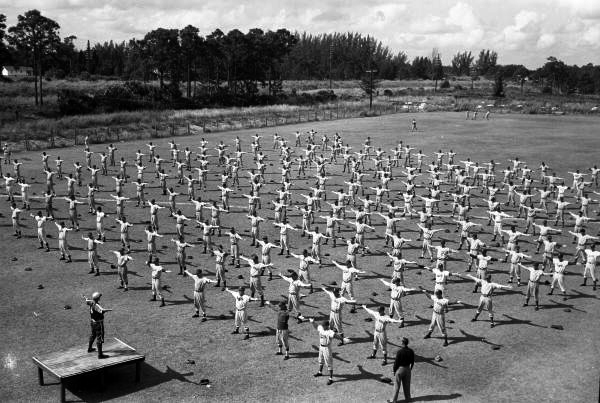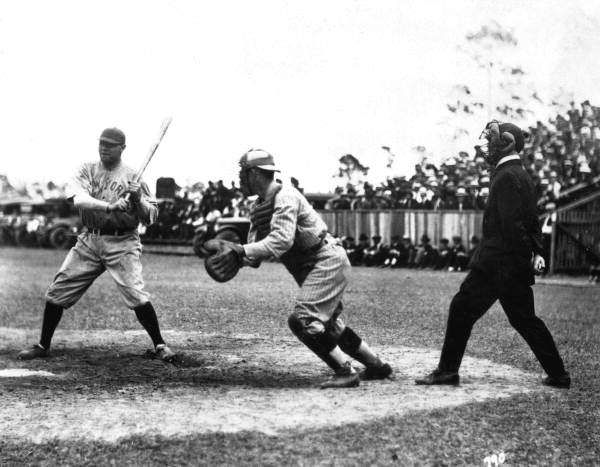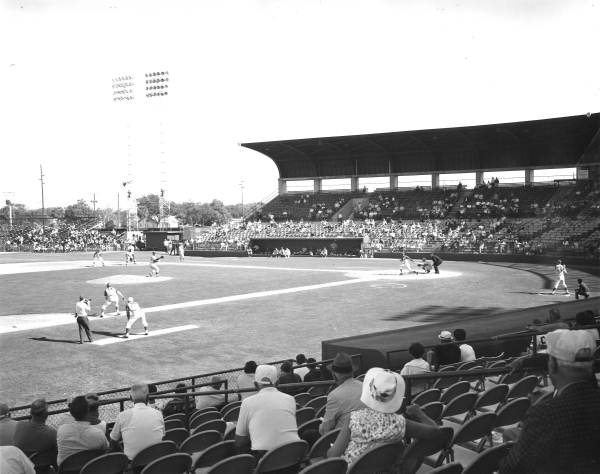Description of previous item
Description of next item
The Grapefruit League
Published April 4, 2019 by Florida Memory
Some people celebrate the beginning of spring because it brings warmer weather and blooming flowers. Other folks are just glad it’s time for major-league baseball to get started! Here in Florida, our baseball season begins a little earlier than it does in most of the rest of the country, because more than a dozen professional ball clubs come here to do their spring training. This tradition has been going on for more than a century now and has earned itself a uniquely Floridian nickname–the Grapefruit League.
The Washington Capitols were most likely the first professional ball club to do their spring training in Florida. They spent three weeks in Jacksonville in 1888 practicing for the upcoming season on a field near Confederate Park. The Capitols finished last in the National League that year, so we might reasonably question whether they got their money’s worth out of the trip, but at least the weather was probably better than it would have been back home. At any rate, the Capitols started a trend. The Philadelphia Phillies spent two weeks in Jacksonville the following year, and more teams followed. By 1920, four major league teams were regularly training in Florida; at the end of that decade the number was up to ten. That’s not counting the number of minor league teams that came either to train or to make their permanent home here.
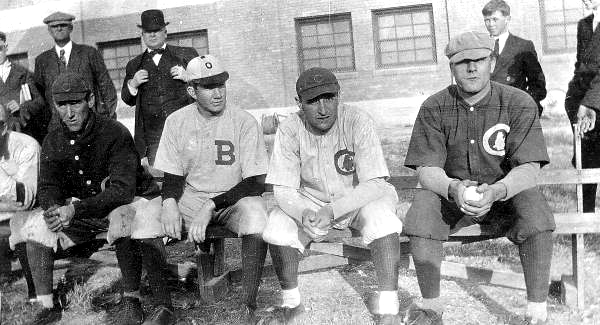
Major League baseball players at Stetson University in DeLand. L to R: Chicago Cubs pitcher Lew Richie, Boston Braves outfielder Jim Murray, Chicago Cubs catcher Jimmy Archer and Chicago Cubs outfielder and first baseman Bill Hinchman (1913).
The exact origin of the name “Grapefruit League” is a little uncertain, but most historians attribute it to an event during the Brooklyn Dodgers’ spring training in Daytona Beach in 1915. According to one version of the story, outfielder and notorious prankster Casey Stengel threw a Florida grapefruit at his manager, Wilbert Robinson, which earned spring training its nickname. Other versions involve an airplane and an aviatrix named Ruth Law, who Stengel convinced to fly low over the Dodgers’ practice field and throw out a baseball, which the outfielder bet that his manager couldn’t catch. Law agreed to her part of the scheme, and Robinson accepted the bet, but when the pilot made her flyover, she threw out a large grapefruit instead of a baseball, splattering Wilbert Robinson in the face. Apparently Ruth had flown up without bringing a baseball with her, so she went for what seemed like the next best thing. Far-fetched? Maybe so, but by the 1920s the name “Grapefruit League” was widely used in the press to describe spring training in Florida.
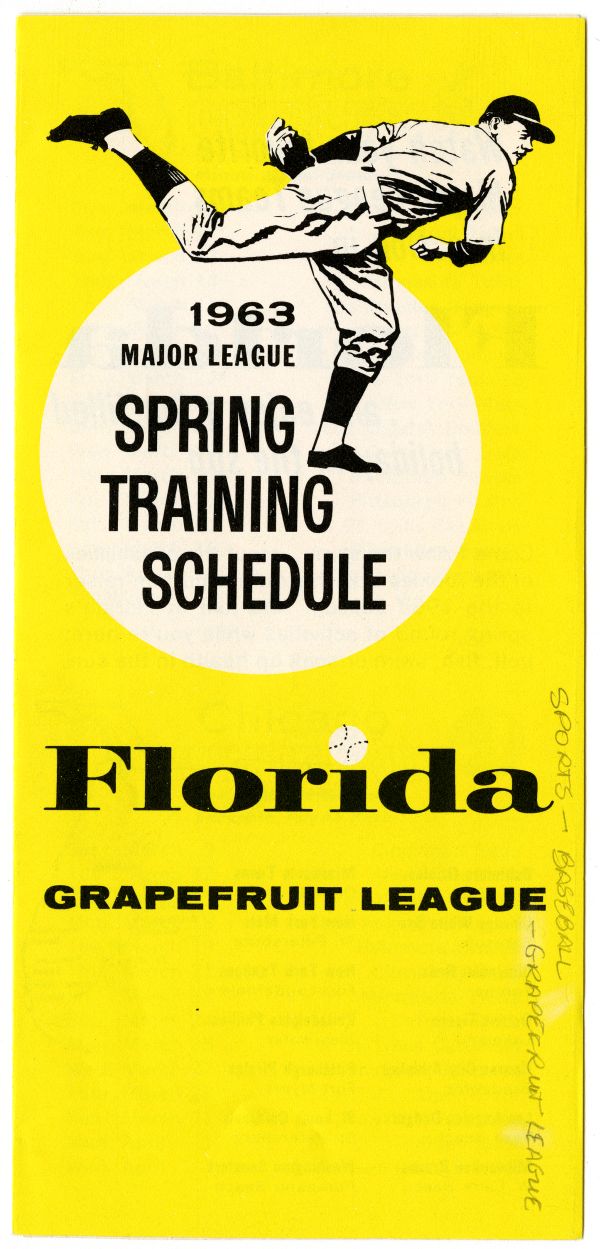
Leaflet containing the 1963 Florida Grapefruit League schedule of exhibition games. Click or tap the image to see the complete leaflet.
Spring training typically lasts about 6-8 weeks. Players work on fundamentals like batting, fielding, bunting and sliding to fine tune their methods and strengthen their bodies before competitive play begins. Managers and coaches watch the players closely as they work to see who will do the best job in each position and who ought to make the team’s final roster. It’s also a good opportunity to give the fans a taste of what they can expect to see during the regular season. Teams play a series of exhibition games during spring training, drawing big crowds eager to get a sneak peek of their favorite players or the newest recruits. This has historically made for some interesting headlines, considering most of the spring training towns don’t have ball teams of their own. In 1928, for example, the Philadelphia Athletics played the St. Louis Cardinals in Avon Park, the Philadelphia Phillies in Winter Haven and the Boston Braves in Fort Myers!
Early on, Florida towns recognized the potential benefits of hosting spring training and began taking steps to lure the major league teams their way. In 1913, a group of Tampa baseball enthusiasts raised more than $4,000 to entice the Chicago Cubs to train in their city. The Cubs enjoyed their experience and ended up signing a contract with the city to return for the next five years. A little farther south, Bealls department store founder and baseball enthusiast Robert M. Beall, Sr. convinced the St. Louis Cardinals to relocate their spring training operation to Bradenton in the 1920s. The team joined forces with the city to construct a $2,000 stadium at McKechnie Field, which opened in 1923. Soon towns across the state were competing to win the winter business of America’s baseball clubs, promising newer and better fields and guaranteed gate receipts for exhibition games. One of the newest spring training facilities is CoolToday Park in North Port in Sarasota County, completed in 2019. The project cost $140 million, $21.2 million of which came from Sarasota County, with another $4.7 million coming from North Port’s city coffers.
Florida communities have long been willing to invest this kind of money in the spring training business because it generally comes with a big payoff. A team’s expenditures can reach into the millions of dollars during their month-long stay in the state. After all, it takes a small army of coaches, managers and support staff to keep the operation going, and they all have to eat, sleep and spend their off-time somewhere. Then there are the fans–thousands of them who come to watch their favorite ball teams in the exhibition games. Many are local baseball enthusiasts, but plenty of fans come from out of state to get an early look at the players and speculate on how the final rosters will shake out. All of this enthusiasm for baseball translates into valuable tourist income for the cities that host a team for spring training.
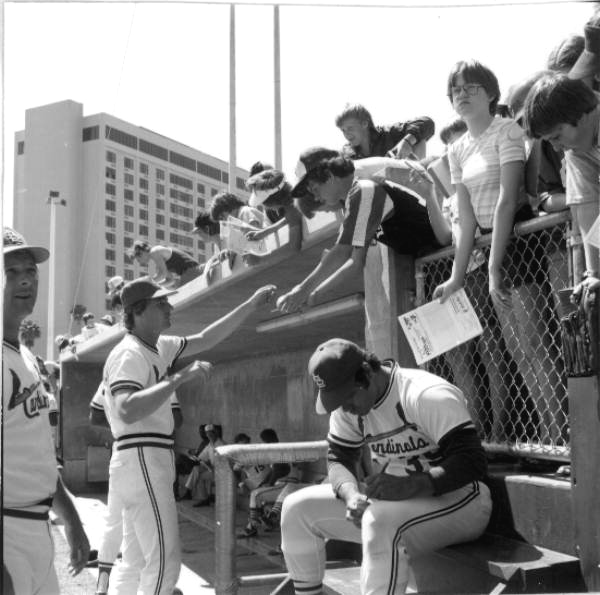
Fans getting autographs from members of the St. Louis Cardinals during spring training in St. Petersburg (1977).
Florida’s state government has recognized this reality for a long time as well and actively encourages the state’s spring training industry. Every year since 1947, for example, the governor has hosted a “Baseball Dinner” for the teams and the press representatives who travel with them. The state has also advertised exhibition game schedules to help visiting fans plan their trip to the Sunshine State.
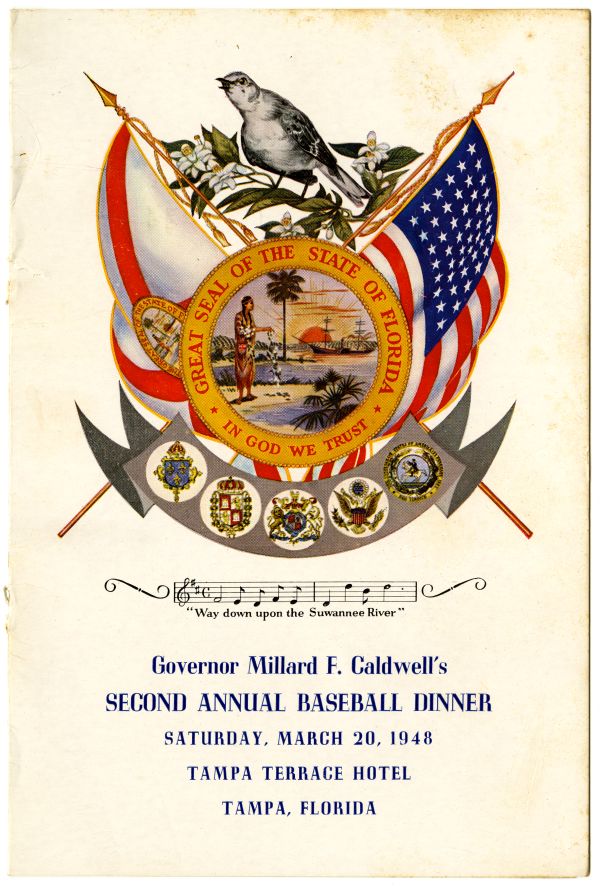
Program for Governor Millard Caldwell’s Second Annual Baseball Dinner, held at the Tampa Terrace Hotel on March 20, 1948. Click or tap the image to see the complete program.
Don’t forget to share this post with the baseball fans among your friends and family, and include your favorite memory involving baseball in Florida!
Cite This Article
Chicago Manual of Style
(17th Edition)Florida Memory. "The Grapefruit League." Floridiana, 2019. https://www.floridamemory.com/items/show/342055.
MLA
(9th Edition)Florida Memory. "The Grapefruit League." Floridiana, 2019, https://www.floridamemory.com/items/show/342055. Accessed December 19, 2025.
APA
(7th Edition)Florida Memory. (2019, April 4). The Grapefruit League. Floridiana. Retrieved from https://www.floridamemory.com/items/show/342055

 Listen: The Assorted Selections Program
Listen: The Assorted Selections Program